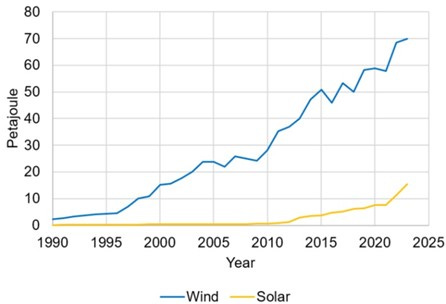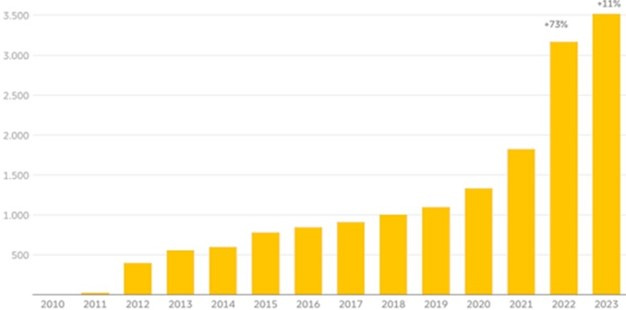Energy Musings - June 24, 2024
Denmark is held up as an example of how to transition a nation's electricity system to renewables. A new paper exposes the problems with this strategy and why it is getting worse.
Denmark Renewable Energy With Blinders On
Hat tip: Bill Thompson and Ed Monaco
A new paper by climate writer Søren Hansen, currently undergoing peer review, dissects the renewable energy business in Denmark highlighting developing problems. Hansen is the editor and chief contributor to the Danish-language website Klimarealisme.dk, Denmark’s only climate-skeptic web page. His paper is a scholarly analysis of the history of the country’s renewable energy market and its growing problems.
The paper is important as Denmark has been a leader in Europe’s green energy economy and has been held out as a model for other countries to follow. Hansen traces Denmark’s emergence as a renewable energy frontrunner but given its impending problems, he questions whether any other country should follow its path.
Forty-five percent of Denmark’s energy consumption comes from renewables – the highest ratio among European countries. The problem is that Denmark is banking on wind and solar to reach its net zero emissions goal by 2045. The rapid growth of solar and wind energy leads to an unstable electricity grid. The combined capacity of wind and solar exceeds Denmark’s average electricity consumption by 2.5 times. This means Denmark often has too much electricity. But there are also numerous times when it has insufficient electricity supply. To operate, the grid must balance between exporting and importing power. Fortunately, Denmark is uniquely positioned because it has neighbors who can take and supply electricity to accommodate the needs of Denmark’s grid.
Like many countries, heating and electricity in the early 1970s was provided by oil. The Arab Oil Embargo changed that and led to the use of coal. It also spurred drilling for oil and natural gas in the North Sea. Power plants were tapped to provide district heat, distributed via networks of pipes to heat homes. Only homes in regions remote from the distribution system were heated by oil. Tapping the heat of electricity plants for district heating made Denmark’s power plants very efficient.
Denmark considered going nuclear in the 1970s but ended the effort in 1985. By 2010, most Danish homes were heated by natural gas or district heat.
In the 1990s, as oil and gas reserves began to dwindle, Denmark started building wind farms. Wind power has grown steadily. (See chart below.) It also shows that after 2010, solar production grew. These gains reflect the growth in wind and solar capacity in recent years.
Denmark’s wind and solar power output has grown significantly since the 1990s.
Onshore wind capacity began growing in 1980 with offshore wind capacity added after 1995. Today, Denmark has about 7 gigawatts (GW) of wind capacity.
Since 2000 Denmark’s wind capacity has grown and is projected to continue growing.
Although Denmark’s effort to build solar capacity didn’t start until 2011, it has exploded in the past two years. Installed capacity grew by 73% in 2022 and 11% in 2023. Today, the country has 3.5 GW of installed solar capacity. Combined, the wind and solar capacity totals 10.5 GW.
Solar installed capacity has soared in recent years.
In 2023, Denmark’s electricity consumption was 4.1 GW. Therefore, the 10.5 GW of wind and solar capacity is 2.5 times the nation’s consumption. Importantly, as the chart below demonstrates, since 2005, electricity consumption in Denmark has declined to current levels equal to the 4.1 GW average.
Keep reading with a 7-day free trial
Subscribe to Energy Musings to keep reading this post and get 7 days of free access to the full post archives.






